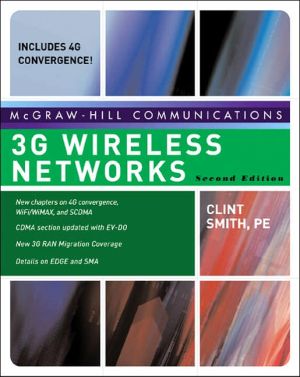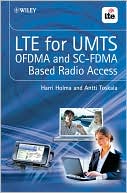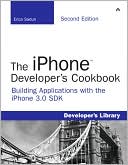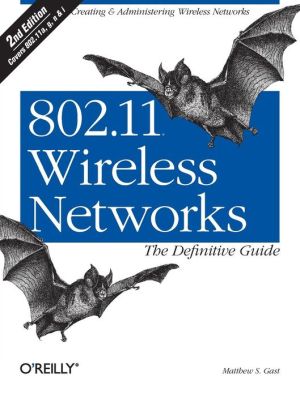3G Wireless Networks, Second Edition
Fully up-to-date coverage of the inner-workings of 3G\ This revised and updated edition of 3G Wireless Networks covers the changes taking place within the arena of 3G—the wireless technology that enables voice, full-featured video, CD-quality sound, and Web browsing anywhere in the world. The book covers key standards and protocols and the critical issues of compatibility, internetworking, and voice/data convergence. You will learn how to successfully design and integrate WCDMA/UMTS,...
Search in google:
In 3G Wireless Networks, experts Clint Smith and Daniel Collins dissect critical issues of compatibility, internetworking, and voice/data convergence, providing you with in-depth explanations of how key standards and protocols intersect and interconnect.
Chapter 1: Wireless Communications\ 1.1 The Amazing Growth of Mobile Communications\ Over recent years, telecommunications has been a fast-growing industry. This growth can be seen in the increasing revenues of major telecommunications carriers and the continued entry into the marketplace of new competitive carriers. No segment of the industry, however, has seen growth to match that experienced in mobile communications. From relatively humble beginnings, the last 15 years have seen an explosion in the number of mobile communications subscribers and it appears that growth is likely to continue well into the future.\ The growth in the number of mobile subscribers is expected to continue for some years, with the number of mobile subscribers surpassing the number of fixed network subscribers at some point in the near future. Although it may appear that such predictions are optimistic, it is worth pointing out that in the past, most predictions for the penetration of mobile communications have been far lower than what actually occurred. In fact, in several countries, the number of mobile subscribers already exceeds the number of fixed subscribers, which suggests that predictions of strong growth are well founded. It is clear that the future is bright for mobile communications. For the next few years at least, that future means third-generation systems, the subject of this book.\ Before delving into the details of third-generation systems, however, it is appropriate to review mobile communications in general, as well as first- and second-generation systems. Like most technologies, advances in wireless communications occur mainly through a process of steady evolution (although there is the occasional quantum-leap forward). Therefore, a good understanding of third-generation systems requires an understanding of what has come before. In order to place everything in the correct perspective, the following sections of this chapter provide a history and a brief overview of mobile communications in general. Chapter 2, "First Generation (1G)," and Chapter 3, "Second Generation (2G)," provide some technical detail on first- and second-generation systems, with the remaining chapters of the book dedicated to the technologies involved in third-generation systems.\ 1.2 A Little History\ Mobile telephony dates back to 1920s, when several police departments in the United States began to use radiotelephony, albeit on an experimental basis. Although the technology at the time had had some success with maritime vessels, it was not particularly suited to on-land communication. The equipment was extremely bulky and the radio technology did not deal very well with buildings and other obstacles found in cities. Therefore, the experiment remained just an experiment.\ Further progress was made in the 1930s with the development of frequency modulation (FM), which helped in battlefield communications during the Second World War. These developments were carried over to peacetime, and limited mobile telephony service became available in the 1940s in some large cities. Such systems were of limited capacity, however, and it took many years for mobile telephone to become a viable commercial product.\ 1.2.1 History of First-Generation Systems\ Mobile communications as we know it today really started in the late 1970s, with the implementation of a trial system in Chicago in 1978. The system used a technology known as Advanced Mobile Phone Service (AMPS), operating in the 800-MHz band. For numerous reasons, however, including the break-up of AT&T, it took a few years before a commercial system was launched in the United States. That launch occurred in Chicago in 1983, with other cities following rapidly.\ Meanwhile, however, other countries were making progress, and a commercial AMPS system was launched in Japan in 1979. The Europeans also were active in mobile communications technology, and the first European system was launched in 1981 in Sweden, Norway, Denmark, and Finland. The European system used a technology known as Nordic Mobile Telephony (NMT), operating in the 450-MHz band. Later, a version of NMT was developed to operate in the 900-MHz band and was known (not surprisingly) as NMT900. Not to be left out, the British introduced yet another technology in 1985. This technology is known as the Total Access Communications System (TACS) and operates in the 900-MHz band. TACS is basically a modi-fied version of AMPS.\ Many other countries followed along, and soon mobile communications services spread across the globe. Although several other technologies were developed, particularly in Europe, AMPS, NMT (both variants), and TACS were certainly the most successful technologies. These are the main first-generation systems and they are still in service today.\ First-generation systems experienced success far greater than anyone had expected. In fact, this success exposed one of the weaknesses in the technologies—limited capacity. Of course, the systems were able to handle large numbers of subscribers, but when the subscribers started to number in the millions, cracks started to appear, particularly since subscribers tend to be densely clustered in metropolitan areas. Limited capacity was not the only problem, however, and other problems such as fraud became a major concern. Consequently, significant effort was dedicated to the development of second-generation systems.\ 1.2.2 History of Second-Generation Systems\ Unlike first-generation systems, which are analog, second-generation systems are digital. The use of digital technology has a number of advantages, including increased capacity, greater security against fraud, and more advanced services.\ Like first-generation systems, various types of second-generation technology have been developed. The three most successful variants of second-generation technology are Interim Standard 136 (IS-136) TDMA, IS-95 CDMA, and the Global System for Mobile communications (GSM). Each of these came about in very different ways.\ 1.2.2.1 IS-54B and IS-136\ IS-136 came about through a two-stage evolution from analog AMPS. As described in more detail later, AMPS is a frequency division multiple access (FDMA) system, with each channel occupying 30 KHz. Some of the channels, known as control channels, are dedicated to control signaling and some, known as voice channels, are dedicated to carrying the actual voice conversation.\ The first step in digitizing this system was the introduction of digital voice channels. This step involved the application of time division multiplexing (TDM) to the voice channels such that each voice channel was divided into time slots, enabling up to three simultaneous conversations on the same RF channel. This stage in the evolution was known as IS-54 B (also known as Digital AMPS or D-AMPS) and it obviously gives a significant capacity boost compared to analog AMPS. IS-54 B was introduced in 1990.\ Note that IS-54 B involves digital voice channels only, and still uses analog control channels. Thus, although it may offer increased capacity and some other advantages, the fact that the control channel is analog does limit the number of services that can be offered. For that reason, among others, the next obvious step was to make the control channels also digital. That step took place in 1994 with the development of IS-136, a system that includes digital control channels and digital voice channels.\ Today AMPS, IS-54B, and IS-136 are all in service. AMPS and IS-54 operate only in the 800-MHz band, whereas IS-136 can be found both in the 800-MHz band and in the 1900-MHz band, at least in North America. The 1900-MHz band in North America is allocated to Personal Communications Service (PCS), which can be described as a family of second-generation mobile communications services.\ 1.2.2.2 GSM\ Although NMT had been introduced in Europe as recently as 1981, the Europeans soon recognized the need for a pan-European digital system. There were many reasons for this, but a major reason was the fact that multiple incompatible analog systems were being deployed across Europe. It was understood that a single Europe-wide digital system could enable seamless roaming between countries as well as features and capabilities not possible with analog systems. Consequently, in 1982, the Conference on European Posts and Telecommunications (CEPT) embarked on developing such a system. The organization established a group called (in French) Group Spéciale Mobile (GSM). This group was assigned the necessary technical work involved in developing this new digital standard. Much work was done over several years before the newly created European Telecommunications Standards Institute (ETSI) took over the effort in 1989. Under ETSI, the first set of technical specifications was finalized, and the technology was given the same name as the group that had originally begun the work on its development—GSM.\ The first GSM network was launched in 1991, with several more launched in 1992. International roaming between the various networks quickly followed. GSM was hugely successful and soon, most countries in Europe had launched GSM service. Furthermore, GSM began to spread outside Europe to countries as far away as Australia. It was clear that GSM was going to be more than just a European system; it was going to be global. Consequently, the letters GSM have taken on a new meaning—Global System for Mobile communications.\ Initially, GSM was specified to operate only in the 900-MHz band, and most of the GSM networks in service use this band. There are, however, other frequency bands used by GSM technology. The first implementation of GSM at a different frequency happened in the United Kingdom in 1993. That service was initially known as DCS1800 since it operates in the 1800- MHz band. These days, however, it is known as GSM1800. After all, it really is just GSM operating at 1800 MHz.\ Subsequently, GSM was introduced to North America as one of the technologies to be used for PCS—that is, at 1900 MHz. In fact, the very first PCS network to be launched in North America used GSM technology.\ 1.2.2.3 IS-95 CDMA\ Although they have significant differences, both IS-136 and GSM use Time Division Multiple Access (TDMA). This means that individual radio channels are divided into timeslots, enabling a number of users to share a single RF channel on a time-sharing basis. For several reasons, this technique offers an increase in capacity compared to an analog system where each radio channel is dedicated to a single conversation. TDMA is not the only system that enables multiple users to share a given radio frequency, however. A number of other options exist—most notably Code Division Multiple Access (CDMA).\ CDMA is a technique whereby all users share the same frequency at the same time. Obviously, since all users share the same frequency simultaneously, they all interfere with each other. The challenge is to pick out the sig-nal of one user from all of the other signals on the same frequency. This can be done if the signal from each user is modulated with a unique code sequence, where the code bit rate is far higher than the bit rate of the information being sent. At the receiving end, knowledge of the code sequence being used for a given signal allows the signal to be extracted.\ Although CDMA had been considered for commercial mobile communications services by several bodies, it was never considered a viable technology until 1989 when a CDMA system was demonstrated by Qualcomm in San Diego, California. At the time, great claims were made about the potential capacity improvement compared to AMPS, as well as the potential improved voice quality and simplified system planning. Many people were impressed with these claims and the Qualcomm CDMA system was standardized as IS-95 in 1993 by the U.S. Telecommunications Industry Association (TIA). Since then, many IS-95 CDMA systems have been deployed, particularly in North America and Korea. Although some of the initial claims regarding capacity improvements were perhaps a little overstated, IS-95 CDMA is certainly a significant improvement over AMPS and has had significant success. In North America, IS-95 CDMA has been deployed in the 800-MHz band and a variation known as J-STD-008 has been deployed in the 1900-MHz band....
Acknowledgments xxiIntroduction xxiiiIntroduction 1The Amazing Growth of Mobile Communications 1A Little History 2History of First-Generation Systems 2History of Second-Generation Systems 3The Path to Third-Generation Technology 54G and Beyond 9Mobile Communications Fundamentals 9Basic Network Architecture 10Air-Interface Access Techniques 13Roaming 18Handoff/Handover 19Mobile Data 20Wireless Migration Options 22Harmonization Process 23Overview of Following Chapters 23References 23First-Generation (1G) Analog 25First Generation (1G) 251G Systems 26General 1G System Architecture 28Typical MTSO Configuration 291G BTS (Cell Site) Configuration 30AMPS Call Setup Scenarios 31Handoff 32Frequency Reuse 34Spectrum Allocation 37Channel Band Plan 371G Systems 40References 40Second Generation (2G) 41Overview 41Enhancements over 1G Systems 46Integration with Existing 1G Systems 46GSM 47TDMA (IS-54/IS-136) 48CDMA 49DECT 52GSM 53GSM Network Architecture 53The GSM Air Interface 58Types of Air-Interface Channels 59Air-Interface Channel Structure 60GSM Traffic Scenarios 62Location Update 62Mobile-Originated Voice Call 64Mobile-Terminated Voice Call 66Handover 68Traffic Calculation Methods 71IS-136 System Description 71The IS-54 Digital Voice Channel 72Control Channel 76MAHO 77Frequency Reuse 78Call Quality 80IS-95 System Description 80Standard CDMA Cell-Site Configurations 81Pilot Channel Allocation 83Forward CDMA Channel 85Reverse CDMA Channel 87Call Processing 88Handoffs 90Pilot Channel PN Assignment 94Link Budget 97Traffic Model 99iDEN (Integrated Dispatch Enhanced Network) 102WiDEN 113CDPD 113Summary 115References 115Third Generation (3G) Overview 119Introduction 119Universal Mobile Telecommunications Service (UMTS) 123Migration Path to UMTS and the Third Generation Partnership Project (3GPP) 124UMTS Services 125UMTS Speech Service 125The UMTS Air Interface 127WCDMA Basics 127Spectrum Allocation 130Overview of the 3GPP Release 1999 Network Architecture 131Overview of the 3GPP Release 4 Network Architecture 133Overview of the 3GPP Release 5 All-IP Network Architecture 135Overview CDMA2000 137Migration Path 137System Architecture 139Spectrum 139TD-CDMA 141Generic TD-CDMA Architecture 141Radio Network 142RAN 142Handover 143Implementation 144TD-SCDMA 144System Architecture 144Channel Structure 145Interference-Mitigation Techniques 146Handover 146Commonality among WCDMA, CDMA2000, TD-CDMA, and TD-SCDMA 147References 148The Evolution Generation (2.5G) 151What Is 2.5G? 151Enhancements over 2G 152Technology Platforms 153General Packet Radio Service (GPRS) 154GPRS Services 154GPRS User Devices 155The GPRS Air Interface 156GPRS Control Channels 157GPRS Network Architecture 158GPRS Traffic Scenarios 163Inter-SGSN Routing Area Update 171Traffic Calculation and Network Dimensioning for GPRS 173Enhanced Data Rates for Global Evolution (EDGE) 175The EDGE Network Architecture 176AMR Half-Rate Traffic Channels 178GSM/GPRS/EDGE Traffic Dimensioning 181High-Speed Circuit Switched Data (HSCSD) 182CDMA2000 (1xRTT) 182Deployment Issues 183System Architecture 185Frequency Planning 188Handoff 188Traffic Calculation Methods 189Deployment 190WAP 192Short Message Service (SMS) 193Migration Path from 2G to 2.5G to 3G 194References 194Universal Mobile Telecommunications Service (UMTS) 197Introduction 197UMTS Basics 197The WCDMA Air Interface 199Uplink Spreading, Scrambling, and Modulation 199Downlink Spreading, Scrambling, and Modulation 204WCDMA Air-Interface Protocol Architecture 207WCDMA Channel Types 211Power Control in WCDMA 218User Data Transfer 221The UTRAN Architecture 223Functional Roles of the RNC 227UTRAN Interfaces and Protocols 227Establishment of a UMTS Speech Call 234UMTS Packet Data (R99) 236High-Speed Packet Data 239HSDPA 239HSUPA 245Handover 246UMTS Core Network Evolution 248The 3GPP Release 4 Network Architecture 248The 3GPP Release 5 IP Multimedia Domain 251References 252CDMA2000 255Radio and Network Components 258Packet Data Serving Node (PDSN) 260Authentication, Authorization, and Accounting (AAA) 261Home Agent 261Router 261Home Location Register (HLR) 261Base Transceiver Station (BTS) 262Base-Station Controller (BSC) 263Network Structure 263Packet-Data Transport Process Flow 265Simple IP 268Simple IP with VPN 269Mobile IP (3G) 270Mobile IP with VPN 272Radio Network (IS-2000 1xRTT) 272Forward Channel 275Reverse Channel 277SR and RC 279Power Control 280Walsh Codes 281EVDO 283EVDO Forward Link 286EVDO Reverse Link 287EVDO Revision 0 288EVDO Revision A 289Data Rate 293EVDO Revision B 294Multicast 295MIMO 295BCMCS 295EVDV 296CDMA Channel Allocation 296References 297TD-SCDMA 303Generic TD-SCDMA Architecture 303Core Network 305Release 4 305Release 5 306Radio Network 307Radio Spectrum 308Channel Structure 308Spreading Codes 309Logical Channel 310Codes 311Interference-Mitigation Techniques 312"Smart" Antennas 312Joint Detection 313Terminal Synchronization 313Dynamic Channel Allocation 313RAN Traffic Planning 314Handover 315Implementation 316References 318TD-CDMA 319Generic TD-CDMA Architecture 320Core Network 320Radio Network 322Radio Spectrum 323Channel Structure 323Codes 324Logical Channel 325Interference-Mitigation Techniques 326RAN Traffic Planning 327Handover 330Implementation 331Comparison 333References 333Voice over IP (VoIP) Technology 335Why VoIP? 336The Basics of IP Transport 336VoIP Challenges 337H.323 339H.323 Network Architecture 339Overview of H.323 Protocols 341H.323 Call Establishment 342H.323 Call Release 346The H.323 Fast Connect Procedure 346The Session Initiation Protocol (SIP) 347The SIP Network Architecture 348SIP Call Establishment 350Information in SIP Messages 351The Session Description Protocol 352Distributed Architecture and Media Gateway Control 354The MEGACO Protocol 356VoIP and SS7 363The SIGTRAN Protocol Suite 366Example of SIGTRAN Usage 369VoIP Quality of Service 369The Resource Reservation Protocol 369Differentiated Service 372Multi-Protocol Label Switching 372References 373Broadband 375WiFi (802.11) 375802.11b 378802.11g 378802.11a 378802.16 379802.16 380802.16d 384802.16e 384802.16x Specifications 385Bluetooth 385Cable Systems 386References 3883G System RF Design Considerations 391RF System Design Procedures 394Planning Process Flow 395New Wireless System Procedure 395Methodology 399RAN Migration Methodology 399Spectrum 400Radio Access Method 401Traffic Forecast 402Legacy System 402Subscriber Migration Process 403Link Budget 403Propagation Models 406Free Space 408Hata 408Cost231-Walfisch/Ikegami 409Cost231-Hata 411Quick 412Tower-Top Amplifiers 413RF Design Guidelines 414Traffic Projections 415Traffic Tables (Appendix) 416Radio Traffic Projections 418Radio Voice Traffic Projections 419Radio Data Traffic Projection 419Cell-Site Design 424Search Area 424Site Qualification Test (SQT) 425Site Acceptance (SA) 426Site Rejection (SR) 428Site Activation 428FAA Guidelines 429EMF Compliance 429RF Design Report 431Cover Sheet 431Executive Summary 431Revision 431Table of Contents 431Introduction 432Design Criteria 432Existing System Overview 432Coverage Objectives 432Coverage Quality 433RF System Growth Requirements 433Intersystem Coverage 433Link Budget 433Analysis 434Summary of Requirements 434References 434Network Design Considerations 437Traffic Forecasts 438Subscriber Forecast 439Voice Usage Forecast 439Data Usage Forecast 440Build-Ahead 441Network Node Dimensioning 442BSC Dimensioning 442UMTS RNC Dimensioning 443CDMA2000 BSC 444MSC Dimensioning 444SGSN and GGSN Dimensioning 445PDSN and Home Agent Dimensioning 446Dimensioning of Other Network Elements 446Interface Design and Transmission Network Considerations 447Placement of Network Nodes and Overall Network Topology 449Cost Optimization 450Considerations for All-IP Networks 451Network Reliability Considerations 452Service Treatments 452TDM/IP/ATM Considerations 454TDM Switching 455Switching Functions 455Circuit Switches 456Space-Division Switching 456Time-Division Switching 456Circuit-Switching Hierarchy 458Packet Switching 458IP Networks 459IP Addressing 460Soft Switches 463ATM 465ATM Networks 468ATM Design Aspects 469Facility Sizes 471Demand Estimation 471VoIP 472OSI Levels 474Final Report 474Summary 475References 475Antenna System Selection 477Base-Station Antennas 478Performance Criteria 479Diversity 482Cross-Pole Antennas 485Dual-Band Antenna 487Intelligent Antennas 488MIMO 490dBi and dBd 490References 491UMTS System Design 493Network Design Principles 493RF Coverage Analysis 494Link Budgets 496RF Capacity Analysis 501Calculating Uplink Cell Load 503Downlink Cell Load 507Load Sharing 511Design of the Radio Access Network 513Iub-Interface Dimensioning 514Determining the Number of RNCs 515Designing the UTRAN Transmission Network 516UMTS Overlaid on GSM 520HSDPA/HSUPA 523References 523CDMA2000 System Design 525Design Methodology 526Deployment Guidelines 5271xRTT 5301xEV-DO 5301xEVDV 530System Traffic Estimation 531Radio Elements 534Antenna Configurations 534BTS 535Channel Element (CE) Dimensioning 536Packet-Data Services (RF Environment) 537Fixed Network Design Requirements 538PDSN 539Packet Zone 539Design Utilization Rates 540IP Addressing 540Traffic Model (1xRTT) 543Walsh Codes 544Packet- Data Rates 553Handoffs 556Search Window 556Soft Handoffs (1xRTT) 556EVDO 558PN Offset Assignment 558Link Budget 5601xRTT 560EVDO 561Sample Basic Designs 564CDMA2000 1xRTT 565EVDO (IS-856) 569CDMA2000 1xRTT with EVDO Overlay 573References 578TD-CDMA and TD-SCDMA System Design 581Design Methodology 582Deployment Guidelines 584System Traffic Estimation 585Radio Elements 589Spectrum 589Antenna Configurations 590Node B 590Fixed Network Design Requirements 591Utilization Rates 593IP Addressing 593Sample Basic Designs 595References 596Communication Sites 599Communication-Site Types 599Macrocell Site 600Omnidirectional Cell Sites 601Directional Cell Site 602Microcells 604Picocell Sites 605Installation 606Cable Runs 606Antenna Mounting 606Diversity Spacing 607Roof Mounting 608Wall Mounting 608Towers 610Stealth 610In-Building and Tunnel Systems 611Antenna System 615In-Building Application 615Tunnel Applications 616Planning 618Intermodulation 619IM Check Procedure 620Colocation 621Isolation Requirements 622Calculating Needed Isolation 624Isolation Requirements 625Free Space 625Antenna Patterns 626Vertical Separation 626Horizontal Separation 628Slant Separation 630Colocation Guidelines 631Colocation Rules 636Communication-Site Checklist 637References 6384G and Beyond 639Technology Path 640IMS 641Convergent Devices 643Smart Phones 643Software Defined Radio (SDR) 644Laptops 645PTT 645Advanced Broadband Wireless Access 645Ultrawideband (UWB) 645Unlicensed Wireless Access (UWA) 646802.20 MBWA 647FOMA and iMODE 652WiBRO 652FWA 652Advanced Wireless Services (AWS) 652Multimedia (Mobile TV) 653MediaFLO 654T-DBM 654DVB-H Digital 654MVNO 655First Responders 655Business Requirements 657References 659Erlang Tables 661=970 12$lErlang B 661=970 12$lErlang C 663Index 665








